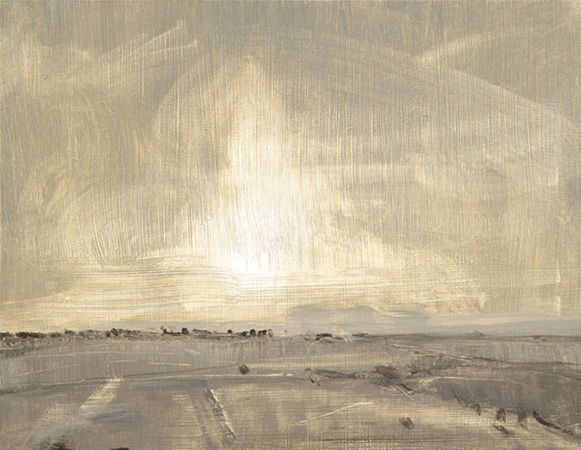Painting outside ‘en plein air’ affords the kind of spatial freedom giving expanse even to a small painting.
The locations for my work have included: the South Downs’ hillsides and panoramas, Sussex woodlands and waterways, the Hampshire New Forest, Tuscan mountains, Alpilles in the South of France and the riversides of Avignon and Arles. Also, the Arun Valley’s protected wetlands, the Malverns, Herefordshire, Lindisfarne and Scotland.
A main rationale of my painting is to capture the transience of life and our connection with nature.
An en plein air landscape is a live interpretation, often being an intuitive approach to understanding a location. It lends well to the first-person narrative. The feelings and thoughts that arise during the process of creating a landscape outside are subtly recorded within the painting in ways that reach beyond initial intentions of design or thought.
Revisiting locations to paint allows for the accumulation of further abstractions and rhythms, which are layered successively upon the surface over a number of days, recording changes in real time.
I am both compelled to revisit familiar locations and paint new locations. Regularly painting at the same location improves fluency but it also adds a little coolness to the process. Even where that location might be familiar, an element of struggle is still required, given the need to find a way around the changing conditions. Consequently, this can lead to the heating up of responses and processes. The first en plein air painting of new location almost always comprises of a heated up way of working.
My mind is always working but the gut and the heart play a strong role.
In the studio, the process becomes both experiential and reflective as methods are more thought-oriented. Further stages of destruction and creation occur, leading to new surface, visual devices, motifs and colour harmony. This can be an evolving process, partially formed from memory of the live locations and partially from the use of subsequent studio discoveries. When I develop paintings in this way, many elements of the original on-site marks are partially buried but still remain visible enough such that they can be visually excavated.
The brush marks, layered textures and painting rhythms aim to capture moments in time and duration and draw attention to surface. Some parts of the multi-layered compositions remain unpainted and abstract. If the viewer’s eye is drawn in and out, and back again, from up close to the painting’s surface and back out to see the whole painting, then I hope to better invite an observation of the spatial interplay between the imagery, the surface and back to the whole of a the painting.
